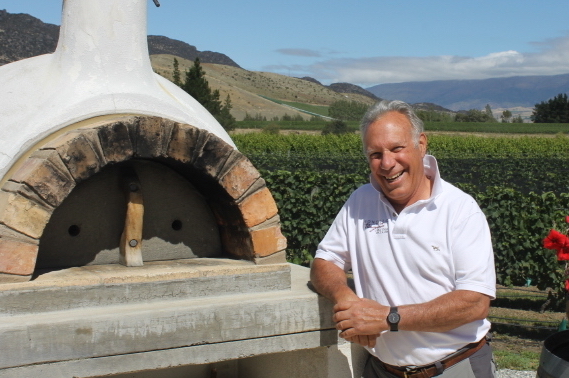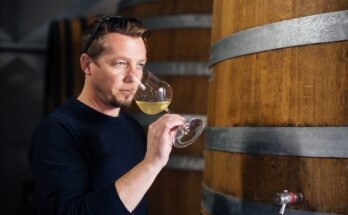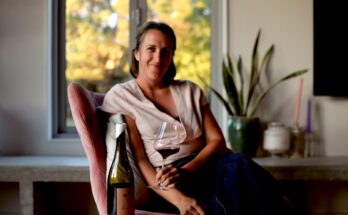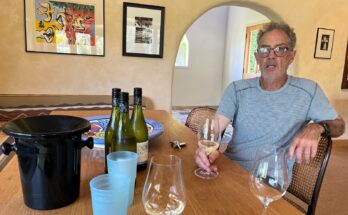Dear reader. We are now living in different times. Covid-19 has cut a swathe through the New Zealand life we knew before it; and a sense of uncertainty hangs over many of our key industries and life in the regions. We continue to publish through these dark days, with a view to the light being able to shine again on the places, wines and people we feature; and we come through to brighter days. If you read these articles, I hope you are enthused to visit, to buy product, and seek out the best of New Zealand in the months ahead.
In a time that almost seems like another life ago – although it was only in February this year – I was in Central Otago, and found my way to the door of another of the region’s wine pioneers – and great characters. Our series of interviews with the winemakers of New Zealand continues with Domenic Mondillo, of Mondillo Wines in Bendigo.

WineFolio: Domenic, tell me about what you’re up to here in Bendigo?
Domenic Mondillo: All I have planted is Riesling and Pinot. No Chardonnay, Sauvignon blanc, Pinot Gris.
WF: No Chardonnay – if we were in Burgundy – Pinot Noir and Chardonnay?
DM: I believe Riesling is the white variety for Central Otago, and my reasoning for that is that we’re actually able to ripen it, retain those fruit qualities and also retain the acidity. I think that’s what makes it work so well with food.
WF: How did you end up in Central Otago?
DM: I’m in Central because I was thrown out of Australia as they would not renew my visa. And I always joke – it’s pretty bad when you get thrown out of a Penal colony!
I arrived in Queenstown in 1981 for a ski holiday, thought the place was absolutely beautiful, and decided to stay. My original training; way back when my hair was black; was Hotel Restaurant Management and Culinary Arts. I had a couple of restaurants in Queenstown as Chef/Owner in the 80s and early 90s. Mike Wolter and Alan Brady were very close friends of mine; and I enjoyed helping Alan and Mike in the vineyard and winery while I still had the restaurants. Upon selling the second one, Alan said “would you like to come and help us at Gibbston Valley Wines?” and I thought he meant for a couple of weeks; I retrained in Viticulture and Oenology, and was with him for 18 years.
Gibbston Valley had decided to extend their company owned vineyards, and my search for suitable land bought me to Bendigo. At that point Rudi had two hectares planted on Bendigo Loop Road. We planted 15 hectares on the western side of Rudi’s block and a further 15 hectares on Chinaman’s and Schoolhouse Terrace. I fell in love with Bendigo myself, and purchased this land in 2000 and planted it between 2001-2004. In addition to developing vineyards in Central, I had the pleasure of helping a dear friend make wine in Oregon for twenty years. So, I’m slowly starting to learn something about wine!
Bendigo now has a reputation for Pinot Noir, and many other brands now have vineyards here, or purchase fruit, one of which, is my good friend Grant Taylor who I worked with at Gibbston Valley for over fourteen vintages.

WF: I met Matt Dicey up at Mt Difficulty a couple of days ago – you would know his family well?
DM: Yes, I have known Robyn (Matt’s dad) for a number of years. Through the early 1990s, Gibbston Valley purchased some of the fruit that is now owned by Mt Difficulty. Back then it was a pretty small wine community and it was all about collaboration and co-operation, and I think that’s really where Central Otago has grown from, and that togetherness can still be seen today.
WF: What do you produce here specifically?
DM: Riesling, Rosé, Pinot Noir, Belle Reserve Pinot Noir and Nina, our Late Harvest Riesling.
At this stage I grow a couple of varieties; stay focussed and strive to do them well. Our first vintage of Pinot was 2004; the first vintage of Riesling was 2007.
Bob Campbell came down recently to the Pinot Noir Celebration and I spent the afternoon with him. After drinking Pinot for three days we decided to do a vertical tasting of Mondillo Riesling. I opened every Riesling I’ve made, from ’07. The older Rieslings are now starting to show secondary characteristics which I truly enjoy. It’s one of those things that I often say “If you’re going to cellar white wine – you’re probably most rewarded by cellaring Riesling”.
This is our Rosé, and is produced from 100% Pinot Noir. It is on the darker side of the colour spectrum after spending a few days on the skins. By giving it that extra time on the skins we have produced a wine that I find texturally interesting, and once again on the dryer side, so perfect with food.
The summer weather patterns between the 2015 and 2016 vintages were significantly different. Overall the 2016 was the warmer summer and I think you can see this reflected in the Pinots your tasting. For the Pinots, we use all French oak, virtually from the same coopers, with 25% new oak, and then 25% each of one, two and three year old wood. I believe this adds a savoury, earthy component with hints of anise, cinnamon and cardamom. In the fruit spectrum flavours of dark cherry, plum and blackberry can always be found in our Pinots.
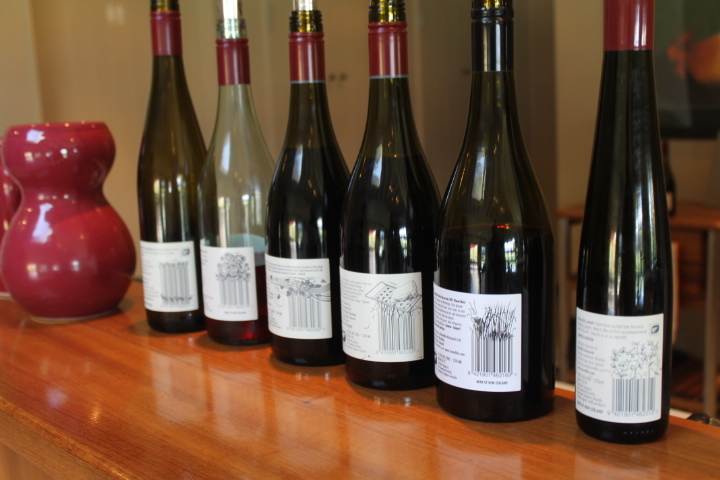
WF: I heard you made a Reserve – so tell me about this – do you isolate particular fruit, or is it a selection from barrels?
DM: The 2017 is a barrel selection. The Bella Reserve has only been produced in 2013, 2015 and 2017. They have all been aged in one-year old barrels with a slightly different clonal selection to the white Mondillo label. We only produced 980 bottles of the 2017 vintage and were fortunate that Bob Campbell wrote wonderful things about it. This vintage has fantastic ageing potential, so we have suggested to our clients to cellar it, and enjoy at a later date.
The 2019 Nina, Late Harvest Riesling, was produced from approximately 60% botrytis fruit which has a wonderful balance with some retained acidity. The 2019 Nina has 147 grams of residual sugar.
WF: This is a beautiful spot – you don’t think of developing it further so you are much more on the map? It’s lovely here.
DM: The views from the top of the vineyard are spectacular. At one point we thought about putting the Tasting Room there, but at the moment this building has worked really well as a multi-functional building, as it doubles as my home away from home (I live in Queenstown) and a cellar door. Several people knowing my background, have said to me “are you going to offer food..” I guess it is something to think about for the future, but certainly not at the moment.
Yes, the Cellar Door is open to the public. We try and encourage ‘by appointment only’ as this gives our visitors a one-on-one experience with James (vineyard manager), Ally (my wife) or myself.
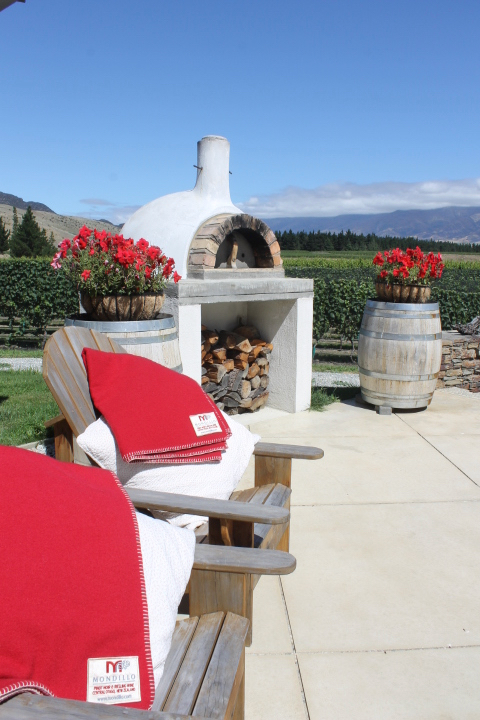
WF: Tell me about the story with the barcodes as well – that’s really clever!
DM: As you would have seen, the vineyard driveway is lined with red roses, these appear on the Rosé label. Ally and I decided that every vintage and variety should be different. Each barcode needed to tell a story, something about Central Otago, the history of the area, the environment, food pairing, animals, the birds and the flowers that surround us here at Bendigo.
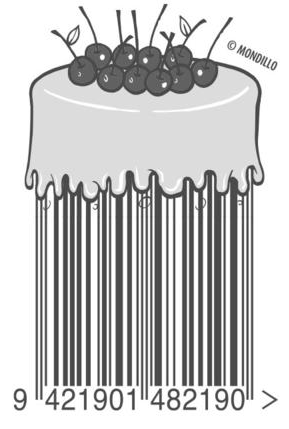
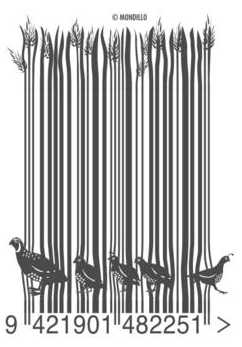
For example, there was a quail family that lived in the Riesling, so they appeared on the 2019 vintage, 2016 was a particularly windy summer, hence the wind-blown grape leaves. We have had linguini falling off a fork, the Remarkable mountains, trout, the dray from up at the old mines, rabbits and many other designs – the small Nina’s labels tend to showcase the flowers and native plants that grow at Bendigo… it’s a little bit of fun. Obviously, I take the wine pretty seriously but I think it is also important to have a sense of humour.

